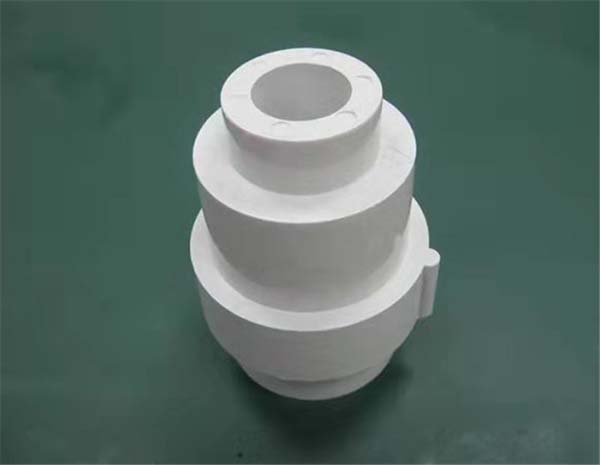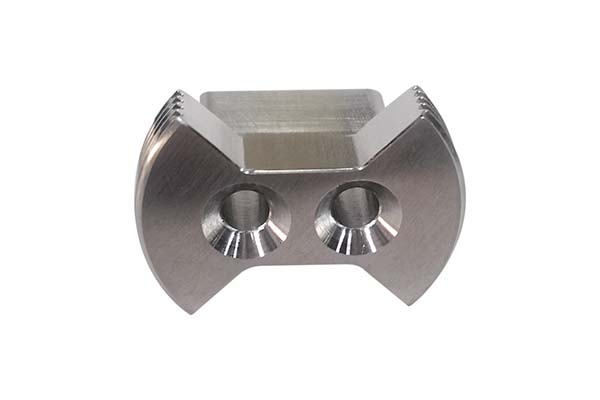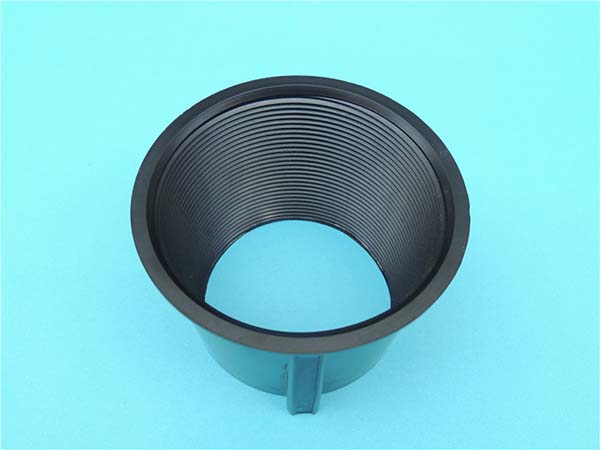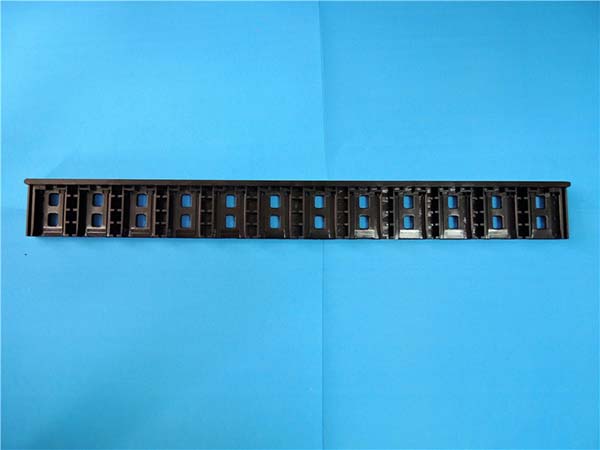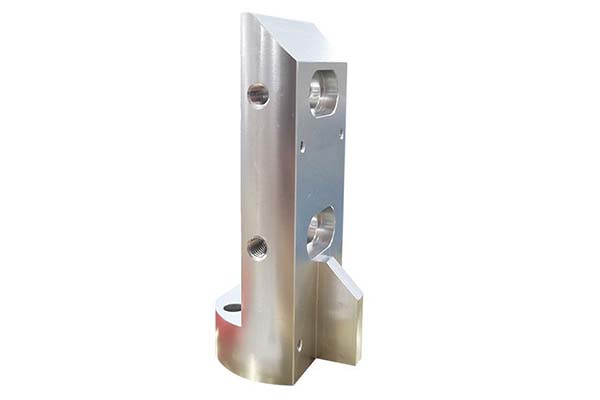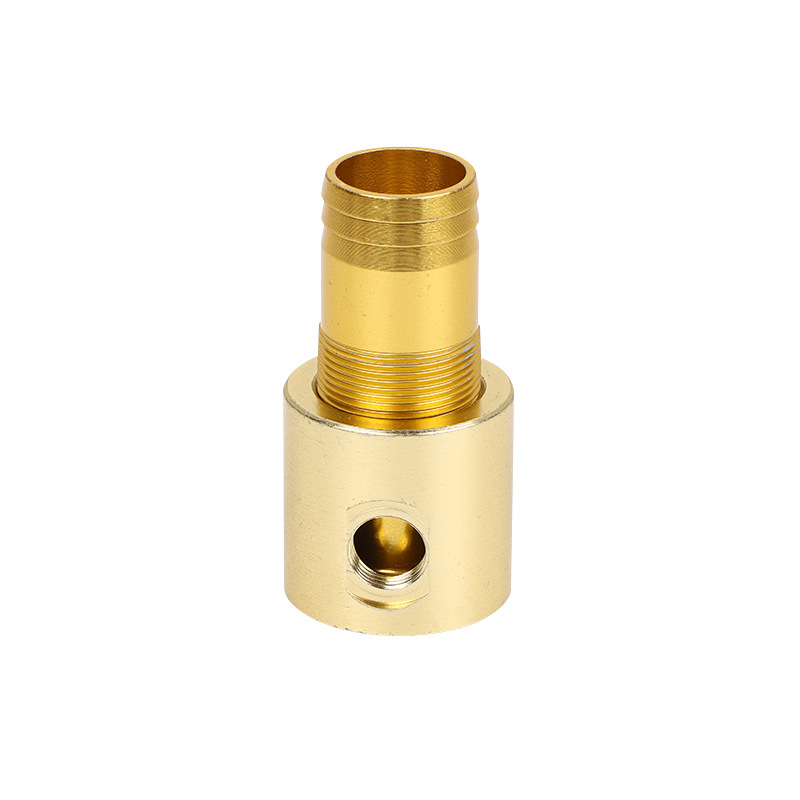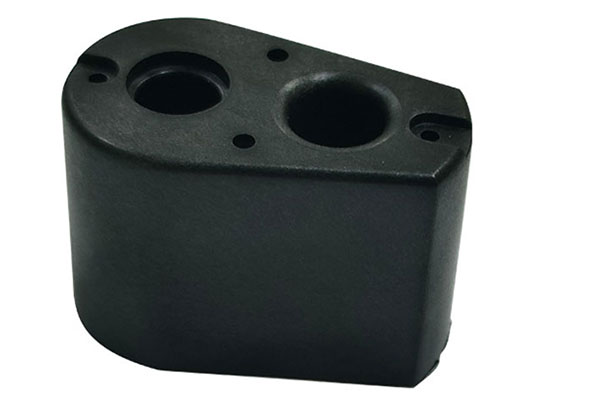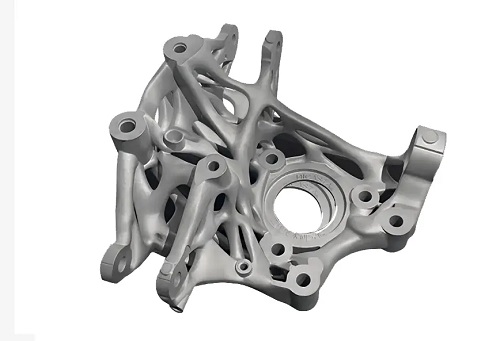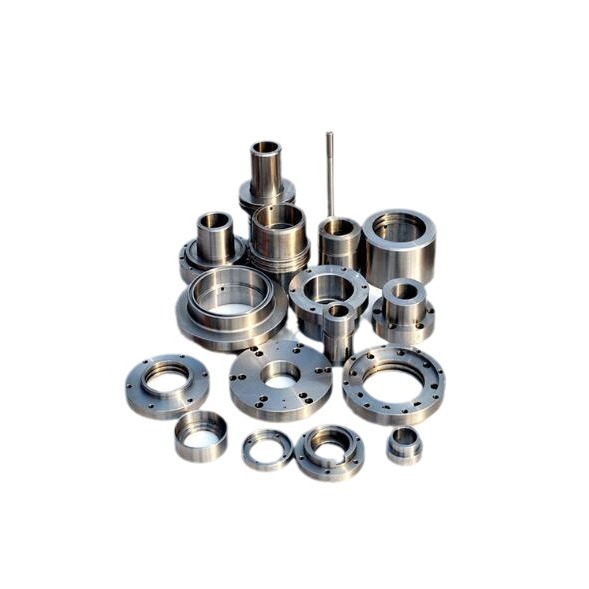Introduction
Additive manufacturing, commonly known as 3D printing, has emerged as a revolutionary technology across various industries, from aerospace to healthcare. But what exactly are the different types of additive manufacturing? Understanding these types is crucial for businesses and individuals looking to leverage this technology for prototyping, production, or innovation. In this article, we will explore the diverse landscape of additive manufacturing, its key types, and how to choose the right one for your needs.
Fused Deposition Modeling (FDM)
Working Principle
Fused Deposition Modeling (FDM) is one of the most well - known additive manufacturing techniques, especially popular in the consumer and hobbyist 3D printing markets. The working principle of FDM is relatively straightforward. First, a spool of thermoplastic filament, such as PLA (Polylactic Acid) or ABS (Acrylonitrile Butadiene Styrene), is loaded into the 3D printer. The printer's extruder heats the filament to its melting point. Once melted, the material is pushed through a nozzle, which is precisely controlled by the printer's software.
The nozzle moves in a three - dimensional space (X, Y, and Z axes) according to the digital model's instructions. As the nozzle moves, it deposits the molten material layer by layer onto a build platform. Each layer adheres to the previous one, and as the process continues, the object gradually takes shape. After each layer is deposited, the build platform either lowers or the extruder raises, depending on the printer's design, to prepare for the next layer deposition. This layer - by - layer construction process is repeated until the entire 3D model is completed.
Materials Used
FDM supports a wide range of thermoplastic materials, each with its own unique properties. PLA is a popular choice due to its biodegradability, ease of use, and relatively low printing temperature (usually around 180 - 220°C). It has a smooth surface finish when printed well and is often used in applications where aesthetics are important, such as in art and design projects.
ABS, on the other hand, is more durable and heat - resistant, with a typical printing temperature range of 220 - 260°C. It is commonly used in functional prototypes and parts that need to withstand mechanical stress or higher temperatures, like in some automotive and electronic applications. Other materials used in FDM include nylon, PETG (Polyethylene Terephthalate Glycol - modified), and TPU (Thermoplastic Polyurethane). Nylon offers high strength and abrasion resistance, making it suitable for mechanical parts. PETG combines good strength, chemical resistance, and transparency, while TPU is flexible, which is ideal for applications like making flexible phone cases or gaskets.
Applications
FDM has found applications in numerous fields. In product prototyping, it allows designers to quickly turn their ideas into physical models. For example, a startup developing a new consumer electronics device can use FDM to create early - stage prototypes to test form, fit, and basic functionality. This helps in identifying design flaws and making improvements before moving on to more expensive manufacturing processes.
In the education sector, FDM 3D printers are widely used in schools and universities. They enable students to bring their 3D - modeled ideas to life, enhancing their understanding of engineering, design, and mathematics concepts. Students can create anything from simple geometric shapes to complex mechanical mechanisms, fostering creativity and hands - on learning. FDM is also used in small - scale manufacturing of custom parts. For instance, a local hobbyist might use FDM to print replacement parts for their 3D printer or create unique accessories for their RC cars.
Stereolithography (SLA)
Working Principle
Stereolithography (SLA) is another prominent additive manufacturing technology, known for its high - precision capabilities. Its working principle relies on the photopolymerization of liquid resins. In an SLA 3D printer, a vat is filled with a photosensitive liquid resin. A high - precision ultraviolet (UV) laser is then used to trace the cross - sectional shape of the 3D model onto the surface of the resin. When the UV laser hits the resin, it causes a chemical reaction called photopolymerization, which instantly cures the resin in the scanned areas.
After the first layer is cured, the build platform is lowered by a very small distance, typically in the range of 0.05 - 0.15 mm, and a new layer of liquid resin is spread over the previously cured layer. The laser then traces the next cross - section, and the process is repeated. This layer - by - layer curing continues until the entire 3D object is formed. Once the printing is complete, the object is removed from the resin vat and usually undergoes post - processing, such as washing to remove any uncured resin and further curing under a strong UV light source to enhance the object's mechanical properties.
Materials Used
The primary materials used in SLA are photosensitive resins, which come in a variety of formulations. General - purpose resins are commonly used for creating detailed prototypes. These resins offer a good balance between cost, ease of use, and mechanical properties. For example, they can have a tensile strength ranging from 30 - 60 MPa, making them suitable for non - load - bearing applications where dimensional accuracy and surface finish are important.
There are also high - temperature - resistant resins available. These are designed to withstand elevated temperatures, making them useful for applications like manufacturing parts for engines or in electronics where heat dissipation is a concern. Some high - temperature resins can endure temperatures up to 150 - 200°C. Additionally, there are flexible resins that can mimic the properties of rubber - like materials. They have elongation at break values as high as 100 - 300%, enabling the production of flexible components such as gaskets, hinges, or soft - touch consumer products.
Applications
SLA has a wide range of applications, especially in industries where high precision and fine details are crucial. In the jewelry industry, SLA is used to create intricate wax - like patterns for the lost - wax casting process. Designers can create highly detailed jewelry pieces with complex geometries, such as filigree patterns or unique gem - setting designs. These patterns are then used to produce molds for casting precious metals like gold or silver.
In the dental field, SLA is employed to produce accurate dental models. Dentists can use these models for diagnostic purposes, treatment planning, and the fabrication of dental appliances. For instance, orthodontists use SLA - printed models to analyze a patient's teeth alignment and design custom - made braces. SLA is also utilized in the production of surgical guides in the medical industry. These guides are designed to assist surgeons during procedures, ensuring precise placement of implants or accurate incisions, thus improving the success rate of surgeries.
Selective Laser Sintering (SLS)
Working Principle
Selective Laser Sintering (SLS) is a powder - bed - fusion additive manufacturing process. In an SLS system, a powder bed is first created. The process starts with a layer of fine powder material being spread evenly across a build platform. Then, a high - power laser, typically an infrared laser, is used to selectively heat and sinter the powder particles according to the cross - sectional pattern of the 3D model. When the laser hits the powder, the heat causes the particles to fuse together. Once a layer is fully sintered, the build platform is lowered by a precise amount, usually in the range of 0.05 - 0.2 mm, and a new layer of powder is spread on top. The laser then proceeds to sinter the next layer, and this process continues until the entire 3D object is formed. One of the key advantages of SLS is that the unsintered powder acts as a natural support structure for overhanging and complex geometries during the printing process.
Materials Used
SLS can work with a wide variety of powder materials. Nylon (PA) is a commonly used material in SLS due to its excellent mechanical properties. Nylon parts printed via SLS have good strength, toughness, and chemical resistance. They can withstand moderate mechanical stress and are suitable for applications like functional prototypes, small - batch production of parts such as gears, brackets, and housings.
Metal powders are also used in SLS, including stainless steel, aluminum, and titanium alloys. Stainless steel powder can be sintered to create parts with high strength and corrosion resistance, which are useful in the automotive and industrial machinery sectors. Aluminum powder is favored for its lightweight nature, making it suitable for applications where weight reduction is crucial, such as in aerospace components. Titanium alloy powder is used for its high strength - to - weight ratio and biocompatibility, making it ideal for medical implants and high - performance aerospace parts. Additionally, SLS can process ceramic powders, which are used to create parts with high - temperature resistance, wear resistance, and electrical insulation properties, for applications in the electronics and high - temperature industries.
Applications
In the automotive industry, SLS is used for manufacturing custom - designed interior components. For example, car manufacturers can use SLS to produce unique dashboard inserts, cup holders, or door handles with complex geometries that are not easily achievable through traditional manufacturing methods. These parts can be personalized according to customer preferences or specific vehicle models.
In aerospace, SLS is employed to fabricate lightweight and high - strength components. Components such as engine brackets and air intake ducts can be designed with optimized internal structures using SLS. These structures can reduce weight while maintaining or even improving the mechanical performance of the parts, leading to better fuel efficiency and overall aircraft performance. The ability to produce complex geometries also allows for the integration of multiple functions into a single part, reducing the number of components and assembly steps.
SLS also finds applications in the footwear industry. Brands can use SLS to create customized insoles or mid - soles with unique cushioning properties. The ability to precisely control the geometry and material distribution in SLS - printed footwear components enables the creation of products that offer better comfort and performance tailored to individual users' foot shapes and walking patterns.
Electron Beam Melting (EBM)
Working Principle
Electron Beam Melting (EBM) is a powder - bed - fusion additive manufacturing process that operates in a high - vacuum environment. The process begins with a layer of fine metal powder being evenly spread across a build platform. An electron gun then generates a high - energy electron beam. This beam is precisely controlled by electromagnetic lenses and deflection coils to scan the cross - sectional pattern of the 3D model onto the powder bed. When the electron beam hits the metal powder, it transfers its energy to the powder particles, causing them to heat up rapidly. The temperature rise is sufficient to melt the powder, and as the beam moves, the molten powder fuses together, solidifying as it cools. Once a layer is completely melted and solidified, the build platform is lowered, a new layer of powder is spread, and the process repeats until the entire 3D object is fabricated.
Materials Used
EBM is primarily used with metal powders. Titanium alloys, such as Ti - 6Al - 4V, are commonly processed in EBM. This alloy is favored due to its excellent strength - to - weight ratio, corrosion resistance, and biocompatibility. Stainless steel powders are also used, offering high strength and good corrosion resistance for applications in the automotive and industrial sectors. Nickel - based superalloys are another material option for EBM. These alloys can withstand high temperatures and mechanical stress, making them suitable for aerospace components like turbine blades. The ability to use these high - performance materials in EBM enables the production of parts with exceptional properties.
Applications
In the medical implant industry, EBM is a game - changer. It allows for the production of highly customized and porous implants. For example, hip and knee implants can be designed with intricate internal structures that mimic natural bone, promoting better osseointegration, which is the process of bone tissue growing into the implant. The biocompatibility of materials like titanium alloys used in EBM further enhances the suitability of these implants for long - term use in the human body.
In high - end manufacturing, especially in the aerospace industry, EBM is used to create lightweight yet strong components. Engine parts such as compressor blades can be manufactured with optimized geometries using EBM. These components are designed to reduce weight, which in turn improves fuel efficiency and overall aircraft performance. The high - temperature - resistant materials processed by EBM ensure that these parts can withstand the extreme conditions within an aircraft engine.
Comparison Table
Here is a comparison table summarizing the key characteristics of the additive manufacturing types we've discussed:
| Additive Manufacturing Type | Materials Used | Precision | Speed | Cost (Equipment & Materials) | Ideal for |
| Fused Deposition Modeling (FDM) | PLA, ABS, Nylon, PETG, TPU | Moderate (0.1 - 0.4 mm layer height typical) | Moderate - Slow, depending on model complexity | Low - Moderate equipment cost, low - cost materials | Prototyping, small - scale manufacturing, education |
| Stereolithography (SLA) | Photosensitive resins (general - purpose, high - temperature, flexible) | High (0.05 - 0.15 mm layer height) | Slow | Moderate - High equipment cost, moderate - cost resins | Jewelry, dental models, surgical guides, high - detail prototypes |
| Selective Laser Sintering (SLS) | Nylon, metal powders (stainless steel, aluminum, titanium), ceramic powders | Moderate (0.05 - 0.2 mm layer height) | Moderate | High equipment cost, high - cost powders | Automotive interior components, aerospace parts, footwear customization |
| Electron Beam Melting (EBM) | Titanium alloys, stainless steel, nickel - based superalloys | High (0.05 - 0.2 mm layer height) | Slow | Very high equipment cost, high - cost metal powders | Medical implants, high - end aerospace components |
Yigu Technology's View
As a non - standard plastic metal products custom supplier, Yigu Technology recognizes the significant advantages of additive manufacturing in non - standard product manufacturing. Additive manufacturing allows for the production of highly customized parts with complex geometries, which is ideal for non - standard products. It eliminates the need for expensive molds as in traditional manufacturing, thus reducing upfront costs, especially beneficial for small - batch production of non - standard items.
